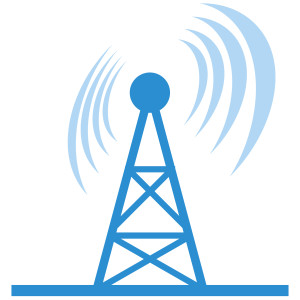Some claim that the wireless network market is too concentrated, that three to four providers is not enough. Essentially this is a debate about static versus dynamic competition. We can compare the wireless markets in the EU on the one hand with the US and Canada on the other and see the differences in approach and outcome.
Static competition is predicated on an economic model of many sellers and a homogenous good, for example, farmers selling the same crops at market. In the model, prices harmonize, and if farmers want to earn more than zero economic profits, they have to diversify their crops, change farming methods, and so on.
Modern static competition is a regulatory outcome achieved by mandating access to networks, controlling prices, regulating wholesale markets, and placing restrictions on incumbents. This approach has been pursued in many countries, particularly in the EU. In many respects it is a way to protect the state-owned incumbent (on whose boards government representatives sit) with an attempt to deliver low prices by requiring the incumbent to make its network available to resellers, generally at a regulated rate. Under such a model, it is not uncommon to have a single network with dozens of resellers. Performance is judged by the number of providers, not the level of technology. Given the mandated low cost access to copper networks, it is no surprise that 74% of all fixed broadband connections in the EU are DSL. There is little incentive to invest in new networks when market entry is facilitated in this way.
Dynamic markets, on the other hand, are characterized by high capital costs and network effects. In these markets, competition is created not by the number of providers but the level of technology. To varying degrees, policymakers in the US and Canada have favored dynamism, seeing the advantages of market innovation over protection.
In a dynamic market, just two providers with different technologies can create competition. An example is cable companies deploying wifi hotspots to compete with mobile providers. The new Tier 1 provider Facebook also competes with mobile operators. Instead of using their wireless provider, some 1.3 billion users consume voice, text and data on Facebook unregulated global wireless platform.
Those concerned about market power and concentration should look at the markets for mobile operating systems (2 players), search engines (1 dominant player), and social networking (1 dominant player) rather than wireless networks. Google and Facebook have larger market caps and user bases than any network provider in North America, and Facebook’s acquisition of WhatsApp for $19 billion gives it dominance in social networking and messaging. But market power and concentration in themselves are not problematic, only in their abuse.
To be sure, dynamic competition befuddles regulators. It doesn’t fit into a tidy box. New competitors are not under any obligations. It’s easier to continue to flog the captured industry.
Whether one supports static or dynamic competition may be a question of values, but empirically the two approaches have vastly different outcomes for network investment. Canada and US invest more per capita than any nation in the world except Japan, and more than twice as much as EU operators. The US and Canada are just 5% of the world’s population but enjoy over a quarter of the world’s investment in communication networks. A decade ago, the EU accounted for more than a third of this outlay, but that has fallen to less than one-fifth today.
Dynamic competition matters if you care about technology innovation. 4G/LTE networks available to 97% of Americans and in Canada to 65% of the population from at least 3 providers. Only a quarter of Europeans can get these networks. Canada and the US are just 6% of the world’s wireless subscribers but enjoy 50% of the world’s LTE connections. These economies of scale allow Americans and Canadians to use more than twice the voice and data as Europeans on networks 75% faster. Unit prices are lower in North America than the EU—that means North American consumers get more value for money.
The network effects delivered by investment from wireless providers are important for the larger innovation ecosystem. It’s not an accident that Apple, Android and Blackberry emerged from North America and that many internet startups leverage the English speaking region of the US and Canada as a single market. This is also why European entrepreneurs come across the Atlantic as the EU is too fragmented.
Static competition may feel good, making it easy for entrants to piggyback on existing networks. This policy to make things easy in the short run creates bigger problems in the long run: too little investment in next generation networks.
Dynamic competition is the better choice for the long run. Ten years ago it took $12,000 and seven weeks to download a movie to a mobile phone. Today not only are handset screens vastly improved, people routinely stream films to their phones at a fraction of the cost and time. Innovation, not regulation, creates human welfare.

